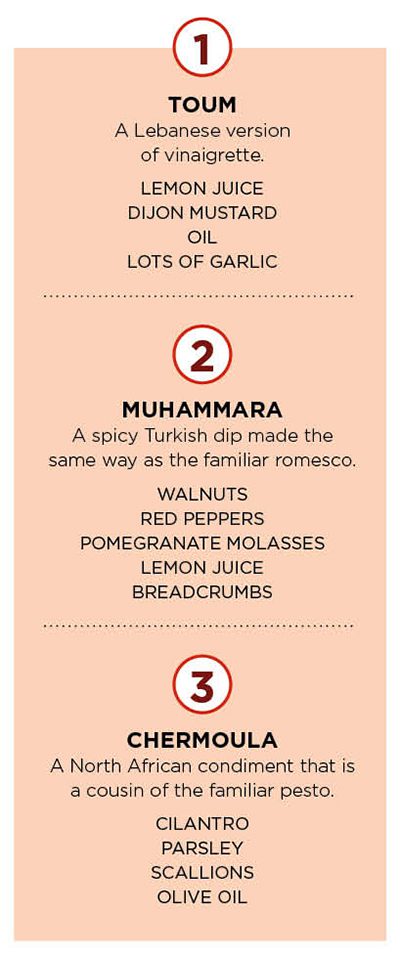This article originally appeared in the Gordon Food Service Foodscape publication.
At the dawn of 2022, food trend predictions called for more global flavors and health-conscious eating. Mediterranean foods and flavors are poised to help operators keep pace.
Sail through the Strait of Gibraltar and enter a world of Mediterranean flavor that goes far beyond the familiar Italian and Greek dishes. From Albania to Turkey, there are 21 countries bordering the Mediterranean Sea, each with regional cuisines ripe for adding global flavor and satisfying mindful eaters.
“The repertoire of what you have available for Mediterranean cuisine is a huge reach, with all kinds of wonderful foods stretching from North Africa to the Middle East and the Baltic region to the Iberian Peninsula,” said Gordon Food Service Consulting Chef Nicholas Gonring. “And from a health perspective, it’s really encouraging that you can cook more healthy and flavorful dishes.”
Start simply
Adding Mediterranean foods and flavors to the restaurant menu doesn’t have to feel foreign. It can be as simple as starting by mixing up some dips or adding seasonings, glazes and sauces to a familiar protein like chicken or vegetable like cauliflower.
“The foods you select can be approachable and recognizable while being interesting and healthy,” Gonring said. “There are so many foods and flavors in the Mediterranean realm—it’s a fun spot to play in.”
Although Mediterranean foods are Old-World, it’s a new school of thought for some operators. For those looking to differentiate their menus and achieve the sweet spot of being both flavorful and healthy, there’s a lot of promise. To set yourself up for success, Gonring recommends looking for ingredients that can become staples.
Woo with familiarity
Unlike French cooking, where butter and cream are a flavor staple, Mediterranean cuisine offers condiments and sauces with lots of healthy flavor options that can be woven into the menu. It’s all about showing diners how Mediterranean components are constructed in ways similar to familiar foods.
Gonring offers three examples:
- Muhammara: a spicy dip made of walnuts, red peppers, pomegranate molasses, lemon juice and breadcrumbs. It’s made the same way as the familiar romesco (roasted tomatoes, peppers and red wine).
- Toum: a garlicky dressing made with lemon juice, Dijon mustard, oil and lots of garlic. It’s simply a Mediterranean version of vinaigrette.
- Chermoula: a North African condiment that calls on cilantro, parsley, scallions and olive oil. It’s a cousin of the familiar pesto.
“Most people are already familiar with components and techniques,” Gonring said. “It would be easy to add yogurt-marinated chicken wings with a dipping sauce to introduce these flavors to mainstream audiences.”
Win with healthfulness
Now is a great time for operators to consider a Mediterranean strategy, notes Amanda Goldman, a Gordon Food Service Healthcare Industry Sales Strategist and registered dietitian. For the fifth straight year, the Mediterranean Diet has been ranked No.1 for healthy eating by U.S. News and World Report.
“As operators look for ways to emerge from the pandemic, they are looking for something that’s innovative, interesting and attention-getting,” she said. “From a health perspective, Mediterranean is in line with anyone who wants to move ahead with plant-based or plant-forward menus.”
Consumers also are looking for new flavor experiences. Taking traditional ingredients and applying a modern Mediterranean twist may be a good strategy.
“The pandemic has pushed forward where millennials are making living in the suburbs cool again, but that also means the places they like to eat will also move into the suburbs” Goldman said. “I think the pandemic and the work-from-home lifestyle make Mediterranean an opportunity.”












